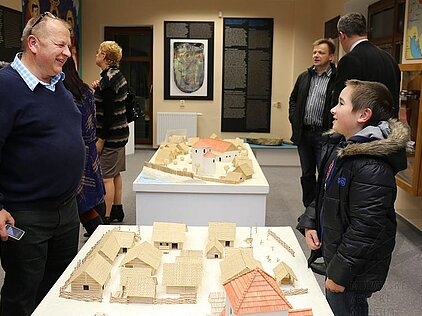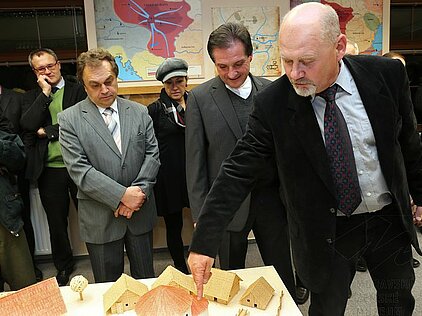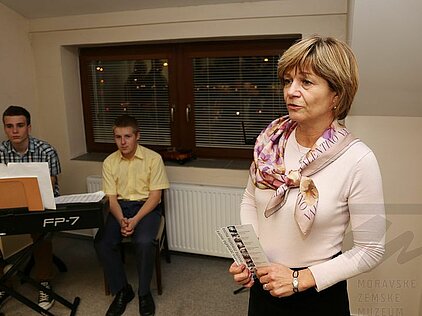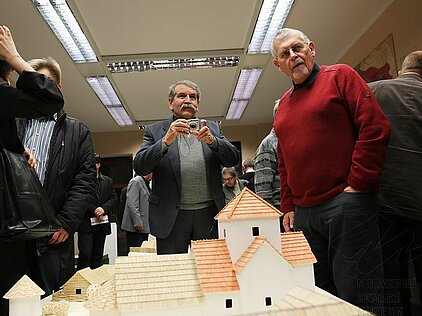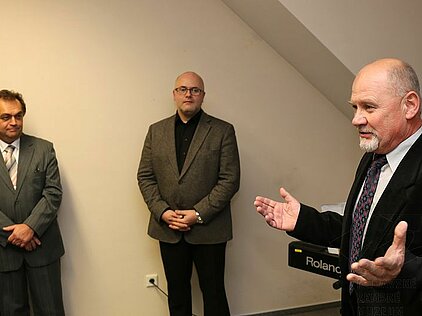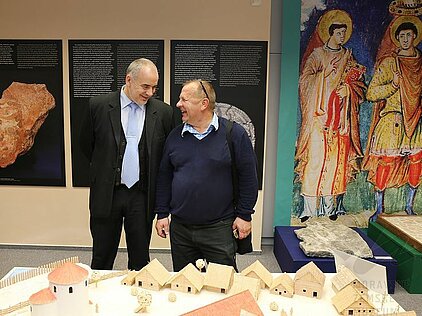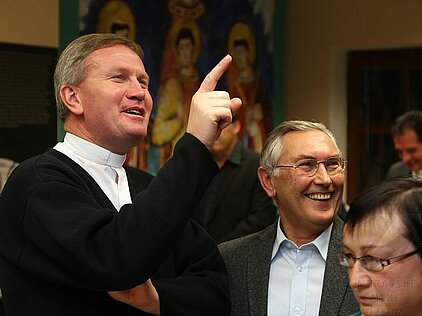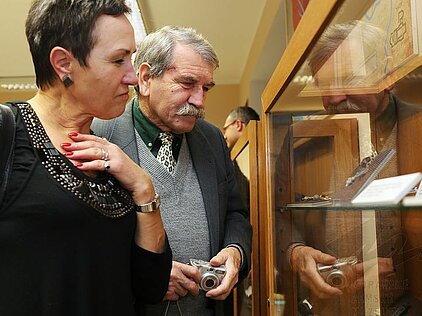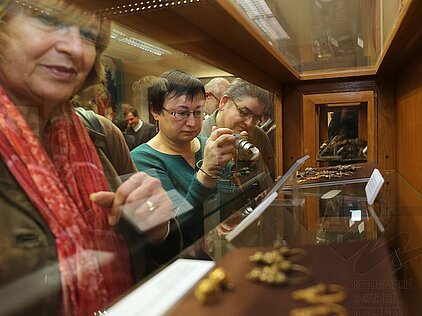St. Cyril and Methodius and the beginnings of Christianity in Moravia
In 863, i.e. 1150 years ago, a Byzantine mission reached Rostislav´s Moravia; it was headed by Constantine the Philosopher, an important personality of the then Christian world, who was accompanied by his brother Methodius and a group of disciples. They came to spread the Word of God in a language understandable to the inhabitants of Moravia that is called today Old Slavonic, its written form in Glagolitic scripture was created by Constantine. The lives of the brothers from Thessaloniki and their continuation in the history of the „Holy Church of Moravia“ under the archbishop Methodius as well as a short presentation of the situation in Moravia before the arrival of the learned Byzantines at the court of prince Rostislav, all this are themes briefly and schematically dealt with in the first exhibition presented in the new „Centre for Slavonic archaeology“ in Uherské Hradiště. Part of the exhibition are large format models showing the probable situation of the sacral centre of Great Moravia in Uherské Hradiště-Sady on Methodius´ Hill in the period when the centre of the „Holy Moravian Church“ was seated there, and the appearance of the still less known power centre in Veligrad situated on the territory of the today cemetery in Staré Město the part of which was also a rotunda standing in the 9th century on the place of the today St. Michaelis the Archangel church. The famous „Fakes from Stupava“, alleged grave stones of St. Methodius uncovered by K. Maštalířová in Chřiby hills near Stupava or fragments of mortar floors discovered in the 1950s during the excavation of the early medieval St. John church in Modrá bei Velehrad are also on display. Interesting are two globular silver earrings decorated with granulation and discovered in October 2013 in Staré Město „Na Vyhlídce“ that represent the recently found jewels, exhibited for the first time, that belong to the group of sumptuous Veligrad jewels from the Great Moravian period. Besides them the visitors can see very well done replicas of shoes of social and ecclesiastic elite as well as replicas of richly decorated spurs and belts having belonged to Great Moravian magnates; in both cases the items come from workshops of top makers and restorers.
We hope that the exhibition on St. Cyril and Methodius and the beginnings of Christianity in Moravia will find its visitors and the new „Centre for Slavonic archaeology“ will soon be enhanced with new finds that will enable further attractive exhibitions.
Photos
